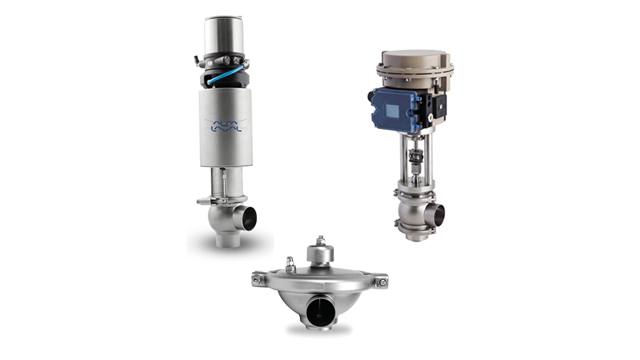
Maximize Power Savings and Comfort With Advanced Building Automation Controls
In the realm of modern-day architecture and facility monitoring, the combination of sophisticated building automation regulates stands as a crucial advancement. By using the power of automation, structures can adjust, respond, and advance in methods that were once unthinkable.
Power Efficiency Advantages
Power performance advantages can significantly lower power usage and operational prices in structures. Energy-efficient systems, such as innovative building automation controls, can enhance the use of sources like illumination, air conditioning, and home heating, leading to lower power costs over time.
Moreover, improved power effectiveness can extend the life-span of building devices and systems. By running much more successfully, a/c systems, light, and various other building components experience less damage, causing minimized upkeep and substitute costs. Furthermore, energy-efficient structures usually command higher residential property values and rental rates, giving lasting monetary advantages to proprietors.
In addition, power efficiency can improve resident comfort and productivity. Properly regulated interior environments with optimal illumination and thermal problems develop a more pleasant and conducive work space, resulting in boosted employee satisfaction and efficiency. On the whole, the power effectiveness benefits linked with innovative building automation controls are diverse, including expense financial savings, environmental stewardship, and occupant health.
Enhanced Convenience Control
Enhancing comfort control in building atmospheres requires an innovative combination of innovative automation systems for optimum occupant wellness. By using advanced structure automation controls, facilities can tailor the indoor atmosphere to fulfill the specific demands and choices of occupants. These systems enable specific law of temperature level, lights, and ventilation, developing a efficient and comfortable atmosphere. Owner contentment and productivity are closely linked to thermal comfort, making it vital to have systems in position that can adapt to changing conditions in real-time.
By integrating these advanced controls, structures can not only improve comfort yet additionally boost energy performance by maximizing system operations based on actual tenancy and use patterns. Inevitably, focusing on occupant convenience with advanced automation systems leads to an extra satisfying and healthier indoor environment.
Operational Effectiveness Improvements

Furthermore, the implementation of real-time tracking and analytics devices makes it possible for structure operators to determine energy inadequacies and operational anomalies immediately. By continuously checking energy use patterns and system efficiency metrics, modifications can be made in real-time to enhance energy usage and ensure peak operational efficiency. control valves. In addition, integrating demand action strategies right into building automation controls can even more enhance operational efficiency by dynamically adjusting energy use based upon grid problems and pricing signals
Indoor Climate Optimization
Reliable indoor environment optimization is an essential facet of building automation controls, guaranteeing occupants' comfort and wellness while maximizing power cost savings. By making use of sophisticated sensors and controls, constructing automation systems can continually change and keep track of temperature, moisture degrees, air high quality, and air flow to produce an optimal indoor environment. Keeping consistent and check these guys out comfortable conditions not just boosts passenger fulfillment however additionally enhances performance and total wellness.
Interior environment optimization additionally plays an important duty in power efficiency. By fine-tuning heating, cooling, and air flow systems based upon real-time information and occupancy patterns, building automation controls can substantially lower power intake - control valves. Executing strategies such as demand-controlled air flow and thermal zoning can aid reduce energy waste while making certain that each location of the building obtains the required conditioning.

Lasting Setting Production
Building automation manages not just enhance indoor environment problems for power efficiency and resident comfort however additionally lay the structure for producing a sustainable environment through strategic monitoring of systems and sources. By incorporating advanced structure automation modern technologies, such as sensors, actuators, and smart software, centers can check and adjust energy use in real-time to reduce waste and lower their carbon footprint. These systems enable anticipating maintenance, determining prospective issues before they rise and maximizing equipment performance to improve durability and efficiency.
Additionally, sustainable environment development expands beyond power administration to incorporate water preservation, waste reduction, and interior air quality improvement. Structure automation controls can regulate water use, detect leaks, and make certain appropriate garbage disposal methods, contributing to total sustainability efforts. Additionally, by regulating and keeping track of air flow and filtering systems, these innovations improve owner review wellness and performance while reducing power intake related to HVAC operations.
Final Thought
Finally, advanced building automation controls offer considerable advantages in regards to power savings, comfort control, operational effectiveness, interior climate optimization, and creating a sustainable environment. By executing these controls, buildings can attain ideal efficiency while reducing power consumption and boosting owner convenience. It is apparent that making use of advanced automation modern technology is vital in improving structure performance and creating a more lasting future.
Energy efficiency benefits can significantly reduce energy usage and operational prices in structures. Overall, the power effectiveness benefits linked with innovative structure automation controls are diverse, including cost savings, environmental stewardship, and owner health.
Furthermore, incorporating demand reaction techniques right into building automation controls can even more improve operational efficiency by dynamically changing power usage based on grid problems and rates signals.
Structure automation controls not only maximize indoor climate problems for power efficiency and passenger comfort however additionally lay the structure for producing a lasting setting via calculated monitoring click here now of sources and systems.In final thought, progressed structure automation manages offer significant benefits in terms of power financial savings, comfort control, functional efficiency, interior climate optimization, and producing a lasting environment.